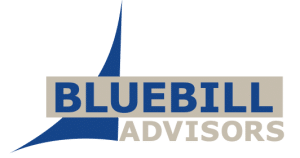Endeca introduced the Endeca Information Access Platform (IAP) – a new platform built specifically to address an emerging market that is attempting to change the way people access and interact with information. The platform is designed to help people find, analyze and understand information in ways not possible with search engine, database and business intelligence solutions. Powered by Endeca’s MDEX Engine technology, it fuses the ease of search and browsing with the analytical capabilities of business intelligence. The Endeca Information Access Platform aids information-based problem solving across a wide variety of business processes, including eCommerce, marketing campaign analysis, product design and parts reuse, knowledge management, and customer service. To meet specific industry and application requirements, Endeca offers a range of Market Solutions, each designed to accelerate time-to-market. These solutions combine the benefits of the platform with unique application modules and deep market and application-specific services expertise. In a related announcement, Endeca has also unveiled a new, expanded line of these solutions. http://www.endeca.com
Category: Semantic technologies (Page 43 of 72)
Our coverage of semantic technologies goes back to the early 90s when search engines focused on searching structured data in databases were looking to provide support for searching unstructured or semi-structured data. This early Gilbane Report, Document Query Languages – Why is it so Hard to Ask a Simple Question?, analyses the challenge back then.
Semantic technology is a broad topic that includes all natural language processing, as well as the semantic web, linked data processing, and knowledge graphs.
Yahoo jumps into the deep end of the pool. This puts the big three (Yahoo, Microsoft, Google) even more on the same path. Competition is a good thing, of course, and here it means that the expansion of content being indexed will only accelerate.
I have commented before on research done by vendors. Such research is not independent of course, but sometimes you look at the results, and some of it makes perfect sense. Take this chart from a presentation by Jonathan Bruce, XQuery Evangelist for DataDirect Technologies. Jonathan was the featured speaker at a recent meeting of The Washington Area SGML / XML Users Group.
If you are interested in XQuery, I would recommend downloading the whole presentation.
Fast Search & Transfer (FAST) announced an OEM partnership with EMC Corporation. Under the terms of the agreement, FAST InStream will be integrated into the recently released Documentum 5.3 platform. FAST InStream provides XML searching, multilingual support to Documentum 5.3. Supporting both structured and unstructured data, FAST InStream is for all types of software applications, including enterprise portals and intranet sites, ECM systems, Customer Relationship Management (CRM) solutions, Enterprise Resource Planning (ERP) solutions, Business Intelligence (BI) suites and applications, as well as storage and archiving solutions. http://www.fastsearch.com
Inxight Software, Inc. announced that it has completed its purchase of the federated search and alert technology product line, formerly called Enterprise Discovery Suite, from Intelliseek, Inc. The product line has been renamed Inxight SmartDiscovery Awareness Server. Inxight SmartDiscovery Awareness Server helps users derive insight and intelligence from hundreds of information sources through a single interface. Alerts automatically inform users of new and updated information. SmartDiscovery Awareness Server is preconfigured out-of-the-box to search and track relevant data from hundreds of online sources, including deep web sources such as patent databases and SEC filings and public web sources such as CNET and MSN Search. Enterprises can also create brokers to new information sources rapidly through a point-and-click interface, extending the searching and alerting capabilities to a wide-range of subscription and enterprise sources. Inxight SmartDiscovery Awareness Server is generally available now.
We had an interesting briefing with Jerry King, Vice President & General Manager, XML Products, for Data Direct Technologies. Jerry champions DataDirect’s XQuery initiatives and products, including Stylus Studio, their XML IDE.
Jerry makes a great case for XQuery being a game-changing technology. That’s his job, of course, but I tend to agree. I am involved in a project now where XQuery is the central technology, and I am convinced of its core benefits for this client and for others. There is also this roundup about XQuery on Internetnews.com that makes some of the points Jerry did, and includes some interesting quotes from Sandeepan Banerjee of Oracle, who leads their XML initiatives.
I’ve been thinking a lot about the best models for enterprise search lately because I work with clients who are mostly unhappy with the way their current enterprise search technology doesn’t result in meaningful content results, or because they are trying to find better ways of categorizing the content for easier access. One technique that I use to elicit feedback on possible approaches is to find examples on the Web of search interfaces that I believe are worth consideration. While I work with corporations with a heavy amount of R&D related content, I use examples as diverse as UN sites, catalogs, health care organizations, and so on, to get everyone’s imaginations working on the possible ways we could present content search options.
In some cases I am working to achieve a browsable construct for a taxonomy (that doesn’t necessarily look like a conventional taxonomy) and in other cases I may be trying to expose the searcher to “advanced” search features without getting into explanations of Boolean options, while still supporting them.
I have recently found a mental digression by thinking more about the reactions I get when I forward links to my clients for “design consideration and feedback.” The reactions seem to be quite visceral and, I’ll admit, mine are, too. I am beginning to segregate likes and dislikes into highly textual interfaces with very sparse graphics vs. interfaces that offer (or attempt to offer) a highly graphical layout of the window. Personally, I have no problem with graphics when they fit or mesh with the text but I realize that I ignore most pictorial graphics. Even when I attempt to use symbolic icons in a graphical interface I encounter for the first time, the struggle to connect meaning to the picture is not worth my effort.
The most confounding interfaces are those with a lot of text and a lot of pictures all mixed in, especially without a cohesive and minimalist color palette. I remember a strange disconnect several months into using Google. A significant holiday day came when they jazzed up their Google imprint. I was certain that it reflected a change in product design and “I didn’t like it.” When someone assured me that it was just a little “Google” fun, I accepted it but I still don’t like having them mess with the pure interface. When they moved the “directories” tab from the main page, it annoyed me and I don’t use it nearly as much any more, first because it is on a new page and second because it has a little picture attached that doesn’t mean “directories” to me.
Guess I’m still mired in the IBM “KISS” mode but I do like my text clean and simple. Take a look at Siderean’s demo – just the way I like it, no frills. No pictures are worth a thousand words to me.
The World Wide Web Consortium (W3C) Semantic Web Best Practices and Deployment Working Group has released the First Public Working Draft of A Survey of RDF/Topic Maps Interoperability Proposals. The document is a starting point for establishing standard guidelines for combined usage of the W3C RDF/OWL family and the ISO family of Topic Maps standards. The group expects to publish Survey and Guidelines Working Group Notes based on this draft. www.w3.org/TR/2005/WD-rdftm-survey-20050329/, www.w3.org/2001/sw/

